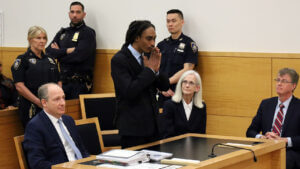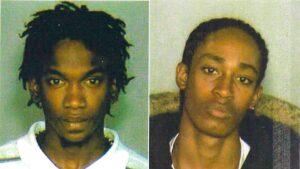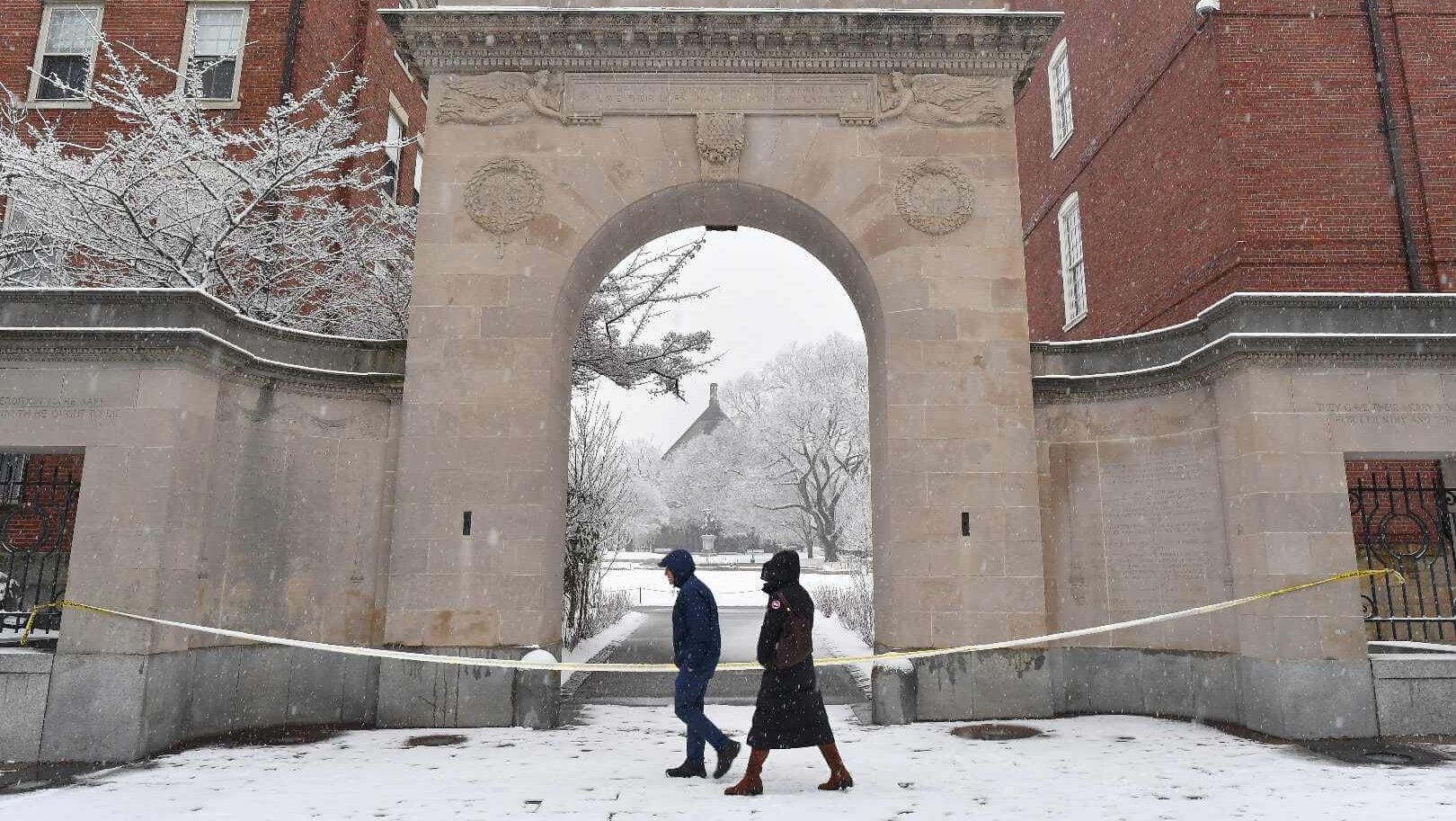NEW YORK (Court TV) — Nearly 20 years after he was convicted for murder, Sheldon Thomas was exonerated Thursday in a Brooklyn courtroom.

Sheldon Thomas appeared in court on March 9, 2023, where he was exonerated. (Brooklyn District Attorney’s Office)
Brooklyn District Attorney Eric Gonzalez announced Thursday that his office asked a judge to overturn Thomas’ 2004 conviction after finding it was made using botched identification.
“I’ve waited a long time for this day to happen,” Thomas told the court, The New York Times reported. “There’s so many times that I was in my cell, I would think of this moment — what I would say, who would be there.”
Thomas was been incarcerated for 18 years following his arrest and conviction, which the DA’s office said in a news release had been made based on the witness identification of a different person with the same name.
“We must strive to ensure fairness and integrity in every case and have the courage to correct mistakes of the past,” Gonzalez said in a statement. “That is what we are doing in this case, where an extensive investigation by my Conviction Review Unit revealed that it was compromised from the very start by grave errors and lack of probable cause to arrest Mr. Thomas. He was further deprived of his due process rights when the prosecution proceeded even after the erroneous identification came to light, making his conviction fundamentally unfair.”
In a 63-page report, the Conviction Review Unit found a number of errors that extended beyond the police investigation, including false testimony from a detective and credibility concerns for a witness.

Brooklyn District Attorney Eric Gonzalez (left) and Sheldon Thomas (right), after a hearing which exonerated Thomas for a 2004 murder. (Brooklyn District Attorney’s Office)
Sheldon Thomas was accused of shooting from a car at a group of people, killing 14-year-old Anderson Bercy and injuring Kadeem Drummond on Dec. 24, 2004.
In the CRU report, officers said detectives created a photo array with “Sheldon Thomas” as the subject — a different person with the same name as the defendant. Detectives took the photo array to a witness’s apartment, and Thomas was identified as a suspect. Detectives then created a “wanted card” for “Thomas, Sheldon,” and included the correct state ID for Thomas, but used the defendant’s address, according to the report. The next day, several officers arrested the defendant at his home.
The incorrect photo identification first came to light in 2006 during a pretrial hearing, where Detective Robert Reedy testified on cross-examination that he had falsely testified and that the defendant was not in the photo array that had been shown to the witnesses. Despite the testimony, the judge found probable cause for Thomas’ arrest.
Investigators said a second detective on the case knew the defendant was not the person in the photo array, but did not say anything because he “believed they had the right Sheldon Thomas.”
At a later hearing, an assistant district attorney “asserted that the People had ‘no legal or ethical obligation to disclose that the person in the photo array was not the defendant because ‘the first person’ to discover it was the defendant himself.”

A photo of Sheldon Thomas (left) from a photo array in 2004 led to the arrest and conviction of Sheldon Thomas (right). (Brooklyn District Attorney’s Office)
On Nov. 1, 2006, Thomas was convicted of second-degree murder, attempted second-degree murder, attempted assault, and weapons charges.
In 2011, Thomas filed a motion to vacate the conviction based, in part, on a study that demonstrated detectives likely influenced a witness to identify “Sheldon Thomas” in the photo array. In the study, a group of 32 law students of color viewed the defendant’s photo for 30 seconds before viewing the photo array for 25 seconds. Of the group, 27 concluded that the defendant’s photo was not in the array. Of the five who said it was, only one concluded that the other Sheldon Thomas was the defendant.
The Conviction Review Unit has resulted in 34 convictions being vacated since 2014. The unit currently has 50 open investigations.
Outside of the courthouse, after he was exonerated, Thomas told The New York Times that he feels for the family of the victim in the case as well.
“It’s not just my life that was ripped apart by the due-process breakdowns and the miscarriage of justice, it was them as well.”












